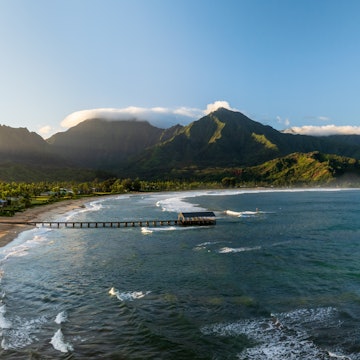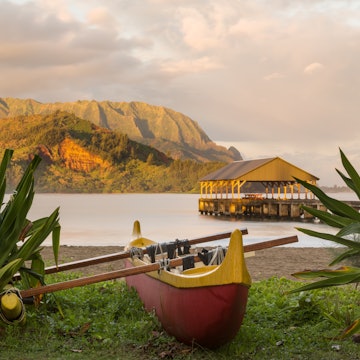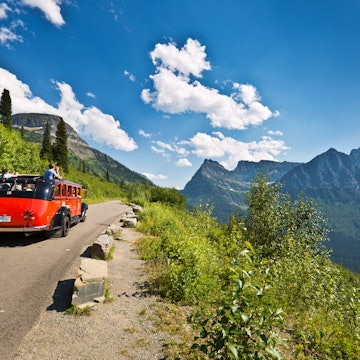
The best time to visit Maui for whale watching, hitting the beach or avoiding crowds
Nov 18, 2021 • 6 min read

Winter is prime surfing season on Maui © Thomas Barwick / Getty Images
The weather is idyllic year-round on Maui, so there's really no bad time to come. Summer and winter temperatures vary only by a few degrees so Hawaii’s Valley Isle offers an enticingly-warm, beachfront escape at any time.
At the resorts clustered in South Maui (Wailea/Kihei) and West Maui (Lahaina/Kaanapali), expect the warmest temperatures in July and August. January and February are only a few degrees cooler; the winter months see more rain, but also better surf conditions and great opportunities for whale-watching.
With Maui being relatively close to the equator, there’s relatively little variation in daylight hours across the year. Resort sunset ceremonies begin between 5:30pm and 6:30pm with the blowing of a conch shell (pu in Hawaiian), followed by a traditional chant and the lighting of tiki torches.
With such slight variations in the weather, deciding when to travel to Maui will usually boil down to the best time for particular activities. Here’s what to expect from Maui month by month.
Editor's note: during COVID-19 there are restrictions on travel and opening hours may vary. Check the latest guidance before planning a trip, and always follow local health advice. Events may be subject to change.
Best time for whale watching: December–March
Understandably, Maui is a busy place during the holiday season and at New Year, when winter is at its worst in many parts of the world. There's more rain than in summer, but it's still warm, and for those escaping frigid, snowy weather back home, winter coincides with the peak season for whale-watching and surfing.
Between November and March, 10,000-15,000 humpback whales migrate from Alaska to Hawaii to mate, give birth and tend to their newborn calves. Their favorite gathering spot is in the shallow waters of the Auau Channel southwest of Maui, making for easy whale encounters.
“My favorite two weeks are the last week of December and the first week of January,” says Daniel Sullivan, a professional photographer who leads whale photography tours in a Zodiac boat. “Literally, there’s whales breaching everywhere. One time, I encountered 54 breaches in a row. It was just amazing.”
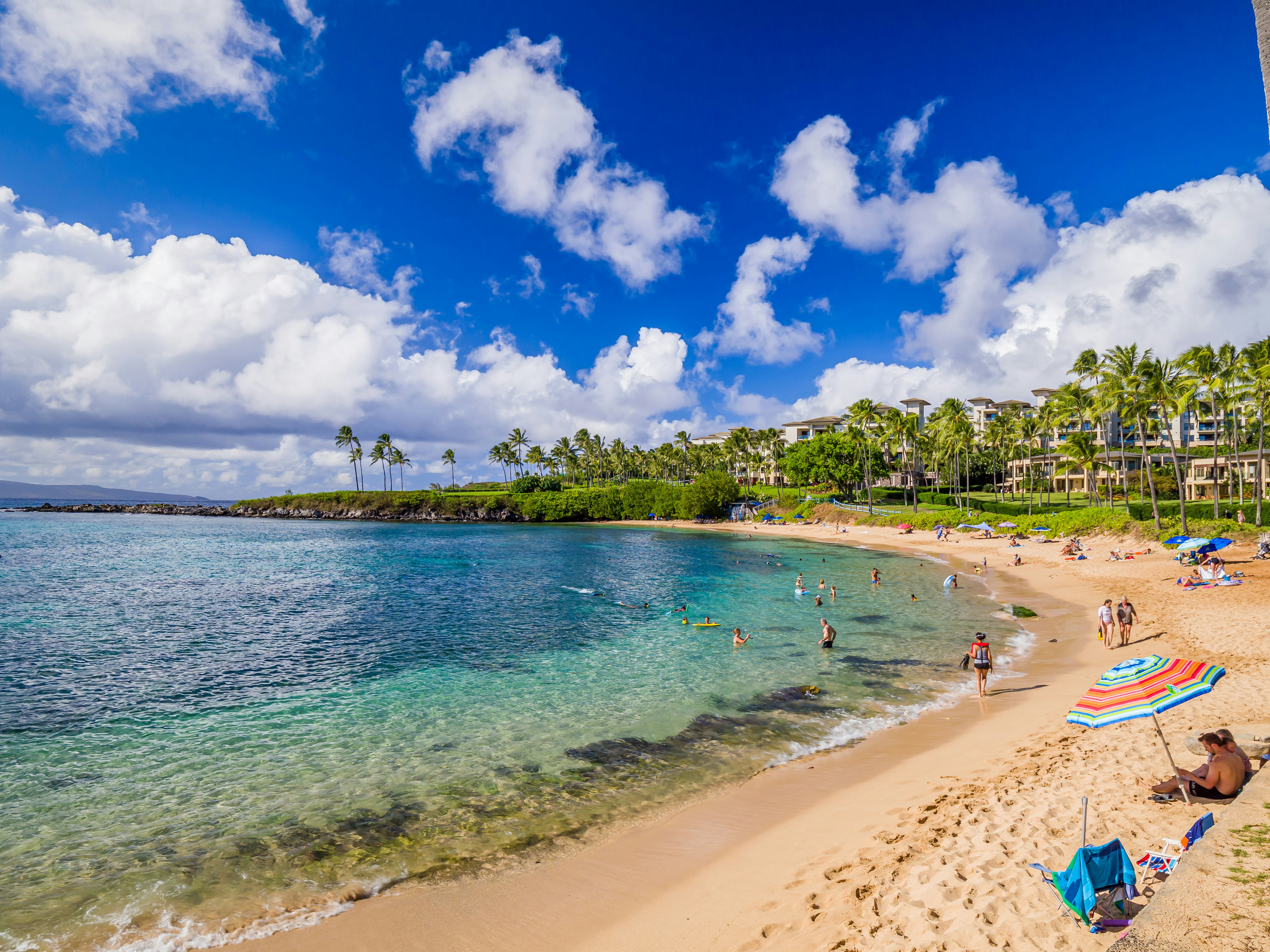
Best time for scuba diving and relaxing on the beach: June–August
The Valley Isle also gets very busy in the summertime. At the height of the summer season, daytime highs hover around 87°F, dropping to 73°F overnight. With abundant sunshine, sunbathers flock to the beaches and snorkelers come out in droves to view the colorful fish and green sea turtles that gather near the coral reefs, just a few yards from the beach.
Summer is when the water tends to be clearest so this is the best time for scuba diving. Key considerations in choosing when to venture into the ocean include cloud cover, which decreases underwater visibility, and wind, which also can decrease clarity.
Visitors making the journey inland to Haleakalā National Park should prepare for very different weather conditions. On days when it’s beach weather at sea level, it can be 30°F at the volcano’s 10,023ft summit, a prime location for watching the sunrise.
When summiting the volcano, dress appropriately; as a gauge, expect the temperature to drop several degrees for every 1,000ft (300m) increase in altitude. The National Weather Service provides an online forecast for the summit (see the "Detailed Forecast" section) or you can view live conditions on the Crater Cam, though the weather can change dramatically during the drive from the oceanfront to the summit.
Best time for lower prices and avoiding crowds: April–May and September–November
Spring and fall see a modest drop in visitor numbers. Hoteliers on Maui don’t really recognize seasonal differences as they do elsewhere in the world, since visitor numbers stay relatively strong regardless of the month, but the low season means quieter beaches, shorter lines at popular restaurants and, sometimes, a drop in room rates. The weather is still warm, and there's less rain than in winter.
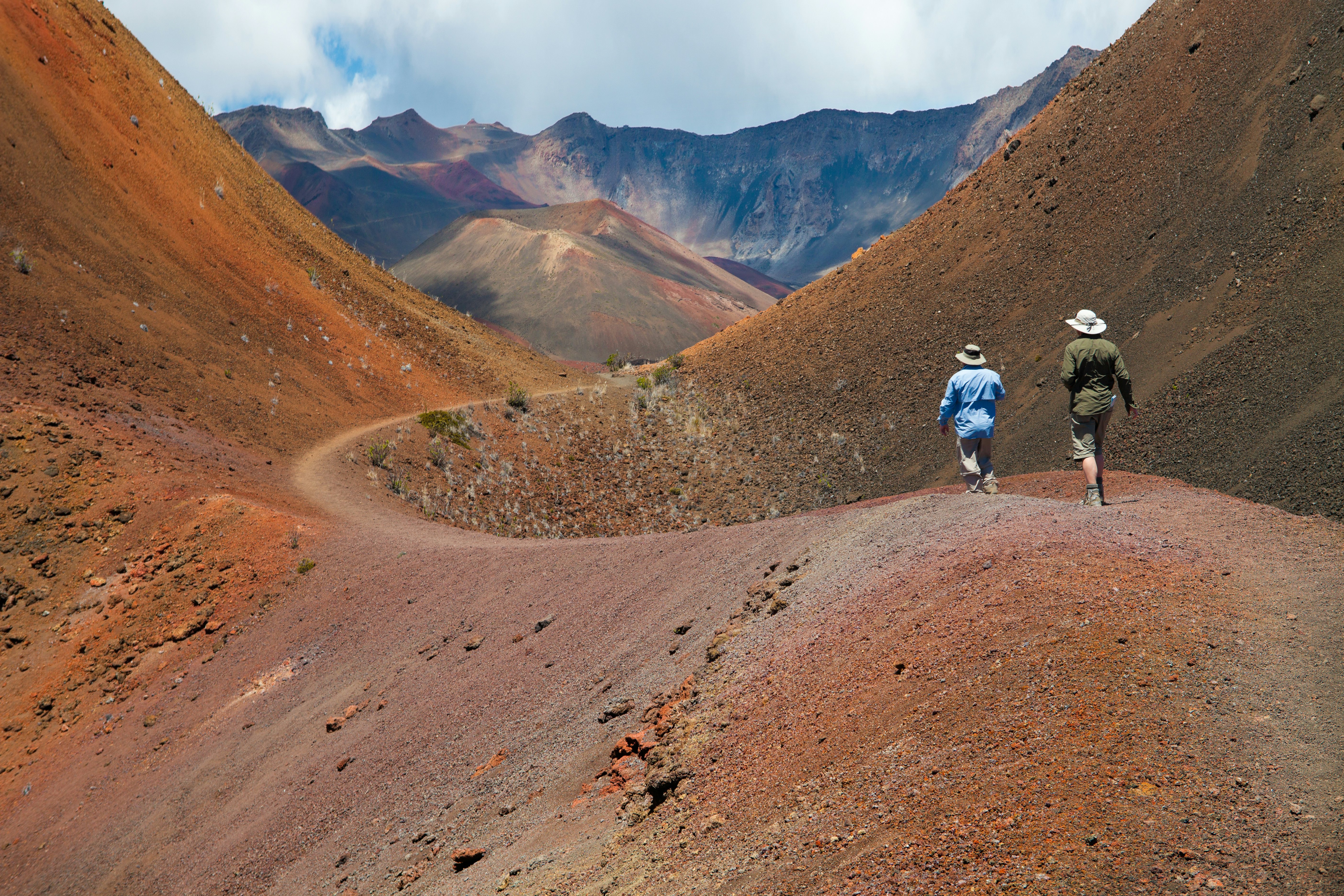
January
While January is statistically a “rainy” month, umbrellas are seldom needed. On average, rain falls on just six days during the month. The Sentry Tournament of Champions, a stop on the PGA Tour, comes to Kapalua.
Key events: Sentry Tournament of Champions, Chinese New Year
February
Typically the coolest month of the year. Daytime highs average 81°F (27°C), with overnight lows still a pleasant 65°F (18°C). With a variety of activities, the Maui Whale Festival seeks to both celebrate and protect the humpbacks that winter here.
Key events: Maui Whale Festival
March
The mild weather continues as the winter peak season winds to a close.
Key events: Lahaina Whale & Ocean Arts Festival
April
The rain dials down as the month rolls on. Leave the big resorts behind and head across the island to tiny Hana for the East Maui Taro Festival, or see Native Hawaiians sharing their traditions at the Celebration of the Arts, held annually at the Ritz-Carlton resort.
Key events: Eat Maui Taro Festival, Celebration of the Arts, Banyan Tree Birthday Party
May
In the build-up to the summer peak season, temperatures climb slightly. On May 1, Hawaii celebrates Lei Day with the making and giving of lei (flower garlands) to honor the spirit of aloha – the Hawaiian concept of fellowship. This state holiday draws locals and visitors alike to destinations across Maui.
Key events: Lei Day, Maui Brewers Festival
June
June is warm, dry and sunny and this is a busy time for events. Outrigger canoes brought the first Polynesians to Hawaii, so it's fitting that these vessels should be in the spotlight during the Waa Kiakahi Canoe Festival at the beachfront Kaanapali Beach Hotel.
Key events: Waa Kiakahi Canoe Festival, King Kamehameha Day Parade & Celebration, Maui Film Festival, Kapalua Wine & Food Festival, Ki Ho’alu Slack Key Guitar Festival
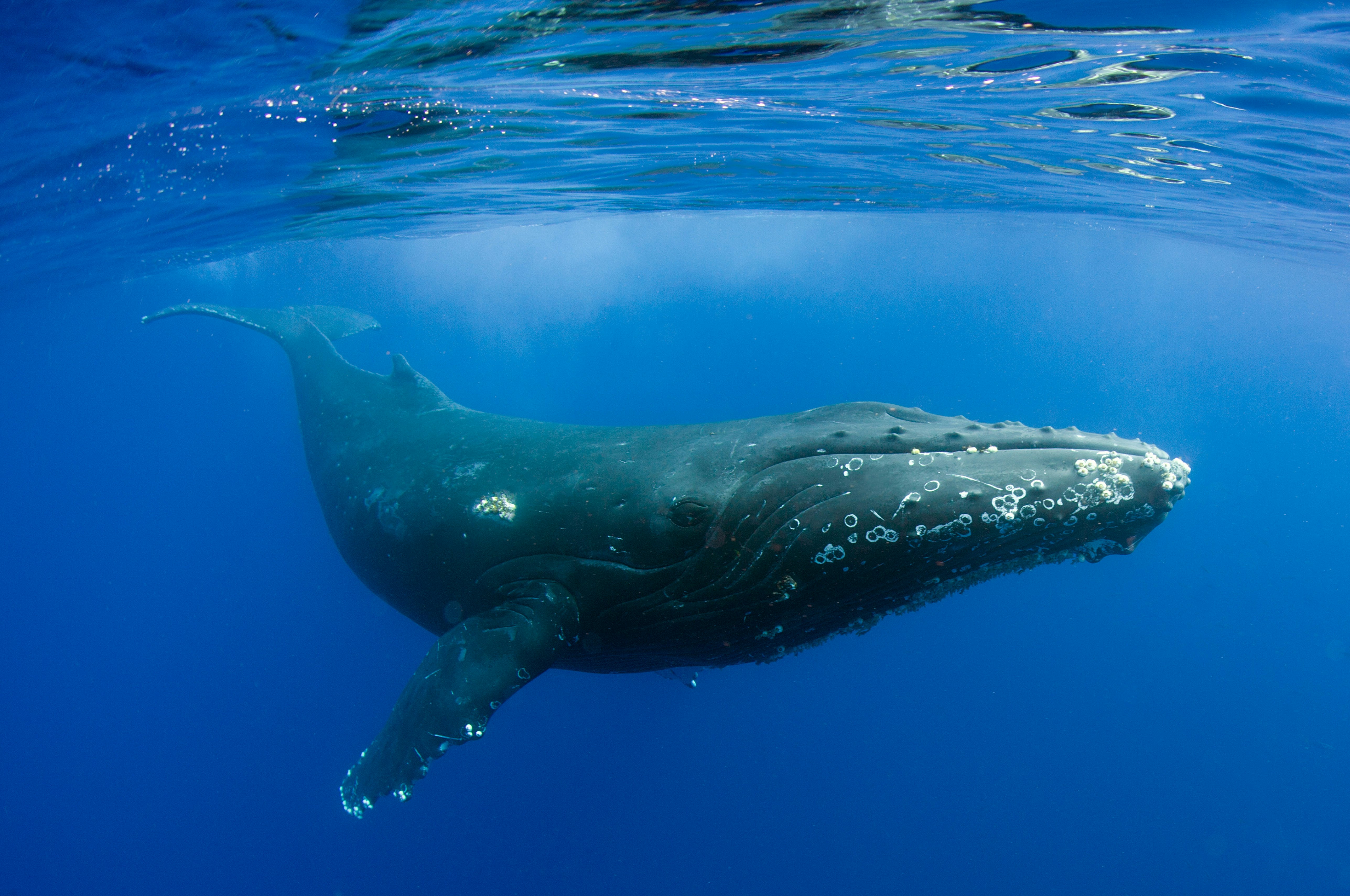
July
The hot, dry weather continues at this busy time for tourism. Indulge in a bounty of fresh, locally-grown fruit while learning more about why it’s so nutritious during the Maui Fruit Festival.
Key events: Maui Fruit Festival, Lana’i Pineapple Festival
August
The warm weather continues. Pack some breath mints and head to the Maui Onion Festival at Whalers Village to try some creative dishes featuring this island-raised veggie.
Key events: Maui Onion Festival
September
Yes, they have county fairs in Hawaii. Health concerns permitting, the Maui County Fair in Kahului draws a crowd. The weather is warm and dry, but with the reopening of schools, tourist numbers start to fall.
Key events: Maui County Fair
October
Temperatures dip slightly from peak summer highs and prices drop slightly as fall approaches. The state’s premier epicurean celebration, the Hawaii Food & Wine Festival links several islands, Maui included.
Key events: Hawaii Food & Wine Festival, Halloween celebrations in Lahaina.
November
Rainfall increases, but the surf season begins and whales start their migration to Maui. It's a quieter time for tourism, but you can watch local kids strut their hula dancing moves during Hula O Na Keiki, a children’s hula competition.
Key events: Hula O Na Keiki
December
There's more rain, but temperatures still hover around 81°F. and it's a good time for whale-watching. Celebrate the season with the lighting of Lahaina’s giant banyan tree, Santa greeting the youngsters in a Hawaiian shirt and holiday shopping. Consider a drive upcountry to the cowboy town of Makawao to visit festive boutiques.
Key events: Christmas, Nā Mele O Maui
You may also like:
Maui's best beaches for swimming, snorkeling and soaking up the sun
How to visit Hawaii on a budget
Top 10 Maui travel experiences










